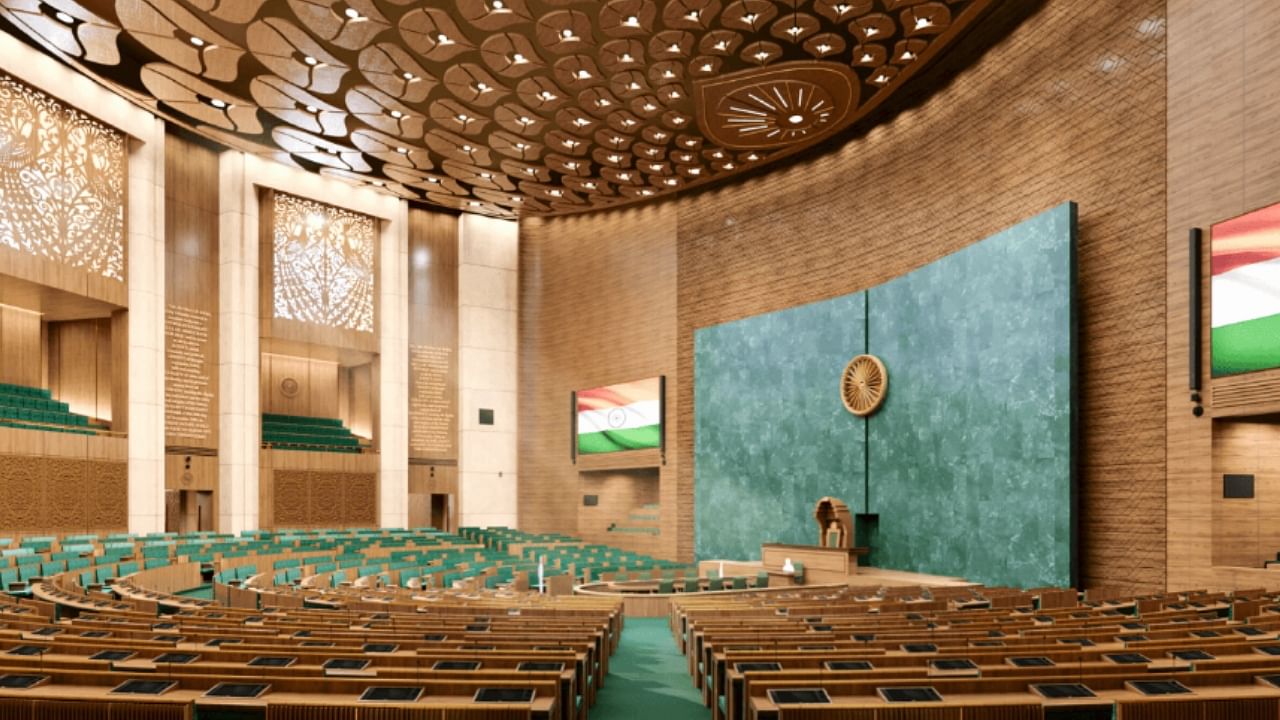
Ahead of the grand opening of the new Parliament building -- which is in the centre of a raging row between the central government and the Opposition -- let's look at some of the salient features of the new symbol of Indian democracy.
The foundation stone of the new parliament building was laid by Prime Minister Narendra Modi on December 10, 2020. The building's construction started on January 15, 2021 and was to be completed by August 2022. The structure which is to be inaugurated on May 28, has been built in record time with quality construction, as per the Lok Sabha Secretariat.
To put that in perspective, the present Parliament building was constructed between 1921 and 1927, as per the official Central Vista website. In 1956, the present building witnessed the addition of two floors to address the demand for more space. In 2006, the Parliament Museum was added.
Read | 'Blatant affront to democratic ethos,' NDA slams Opposition's Parliament inauguration boycott
The new building, constructed by Tata Projects Ltd, will have a grand constitution hall to showcase India's democratic heritage, a lounge for MPs, a library, multiple committee rooms, dining areas and ample parking space.
The new Parliament building has a built-up area of 65,000 sq mt and has generated employment for around 23,04,095 people, as per the official Central Vista website.
Apart from this, the new Parliament building can comfortably seat 888 members in the Lok Sabha chamber and 300 in the Rajya Sabha chamber, according to the Lok Sabha Secretariat. In case of a joint sitting of both the Houses, a total of 1,280 members can be accommodated in the Lok Sabha chamber. Meanwhile, the present building was never designed to accommodate a bicameral legislature and the seating arrangements were cramped and cumbersome, officials have said. The Central Hall of the present Parliament building has a seating capacity only for 440 people and the need for more space was acutely felt during joint sittings of both the houses.
The new structure's triangular shape ensures optimum space utilisation. The building has three main gates -- Gyan Dwar, Shakti Dwar, and Karma Dwar. It will also have separate entrances for VIPs, MPs, and visitors.
Let's take a quick look at the numbers:
Total built-up area: 65,000 sq m
Cost estimated: Rs 970 crore
Employment generated (in man-days): 23,04,095
Steel used (in MT): 26,045
Cement used (in MT): 63,807
Fly ash used (in cubic metre): 9,689
Seating capacity: 1,224
(With agency inputs.)